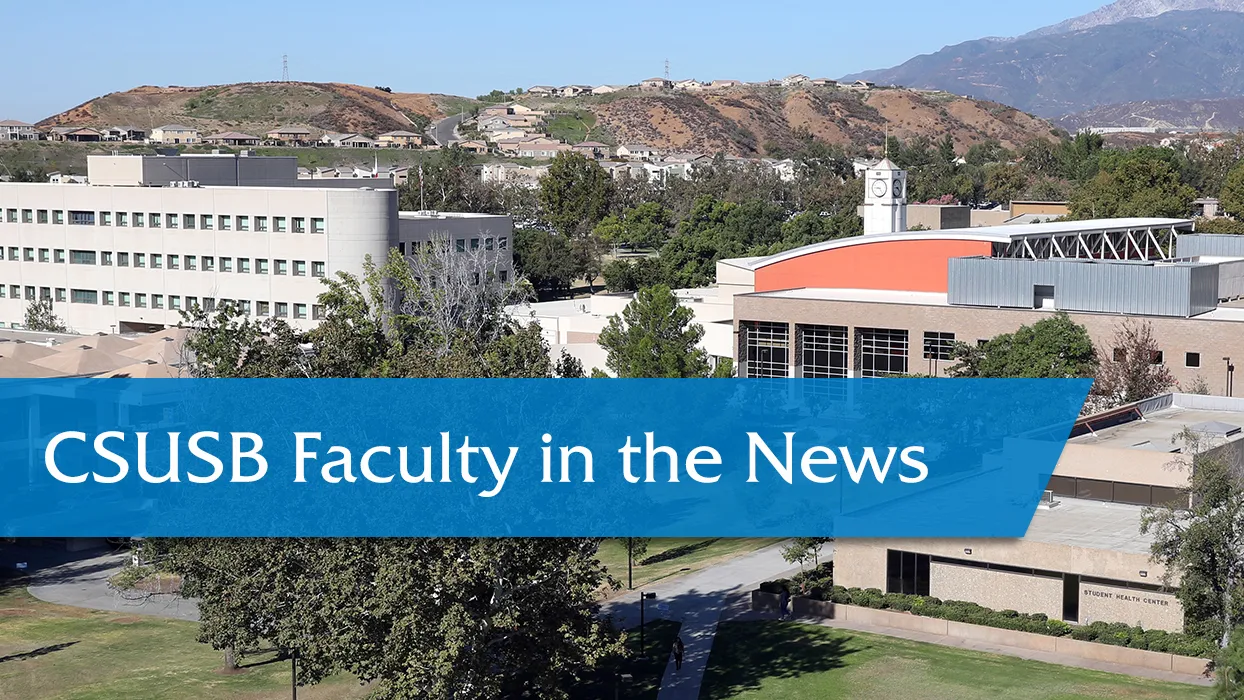NOTE: Faculty, if you are interviewed and quoted by news media, or if your work has been cited, and you have an online link to the article or video, please let us know. Contact us at news@csusb.edu.
CSUSB psychology professor discusses how family separation at the at U.S.-Mexico border impacts childrenTeen VogueJune 20, 2018
As almost 2,000 children have been separated from their parents due to the Trump administration’s new zero-tolerance immigration policy, physicians and psychologists say these migrant children could suffer both short-term and life-long mental health issues as a result.
With these skyrocketing numbers of separated children comes an increase in the number of children who are likely to experience mental health issues such as post-traumatic stress disorder. On top of these traumas, separating children from their parents increases the likelihood that children will develop long-term mental health issues such as anxiety and depression, according to Amy van Schagen, an assistant professor of psychology at California State University, San Bernardino, who specializes in child development and its relation to race and culture.
In the short term, she tells Teen Vogue, “Being separated from their parents or having inconsistent living conditions for long periods of time can create changes in thoughts and behavior patterns, and an increase in challenging behavior and stress-related physical symptoms,” such as sleep difficulty, nightmares, flashbacks, crying, and yelling.
In the long term, a study found that children who experienced trauma at a young age had smaller brain volumes and less connective matter than typically developing children, impairing their ability to communicate and think critically. Motor skills, impulse control, self-identity, self-esteem, and the ability to trust adults are also affected, according to van Schagen.
Van Schagen said that separation sends a message to a child “that they’re not a priority.”
Further, she says, “The impact of just being a child of color in this situation can also influence their views of themselves because of the messages that they’re getting. They don’t have to be overt – people don’t have to say, ‘You’re not good enough to come and live in a safe place’ – but can be covert in being separated from their family, not being told information, or being too young to understand.”
Read the complete article at “How family separation at the border impacts children.”
CSUSB history professor interviewed about humanitarian situation in the besieged Yemeni port city of HudaydahPressTVJune 19, 2018
David Yaghoubian, CSUSB professor of history, was interviewed about the humanitarian situation in the besieged Yemeni port city of Hudaydah in the ongoing conflict between Yemen’s armed forces and the Saudi-led coaltion. The port city is the entry point for 70 percent of essentials to war-torn Yemen where millions are at risk of starvation.
Press TV is a 24-hour English language news and documentary network affiliated with Islamic Republic of Iran Broadcasting.
Watch a video of the interview at “Yemeni forces: Hudaydah airport has not fallen.”
CSUSB faculty’s mini-review on research on the promise of piezoelectric polymers publishedWiley Online Library
CSUSB faculty members Timothy Usher (physics), Kimberly Cousins (chemistry and biochemistry) and Renwu Zhang (chemistry and biochemistry), along with Stephen Ducharme (University of Nebraska, physics and astronomy) published a mini-review on the research on the promise of piezoelectric polymers.
The abstract: “Recent advances provide new opportunities in the field of polymer piezoelectric materials. Piezoelectric materials provide unique insights to the fundamental understanding of the solid state. In addition, piezoelectric materials have a wide range of applications, representing billions of dollars of commercial applications. However, inorganic piezoelectric materials have limitations that polymer ferroelectric materials can overcome, if certain challenges can be addressed. This mini‐review is a practical summary of the current research and future directions in the investigation and application of piezoelectric materials with an emphasis on polymeric piezoelectric materials.”
Read the complete article at “The promise of piezoelectric polymers.”
These news clips and others may be found at “In the Headlines” on the Inside CSUSB website
